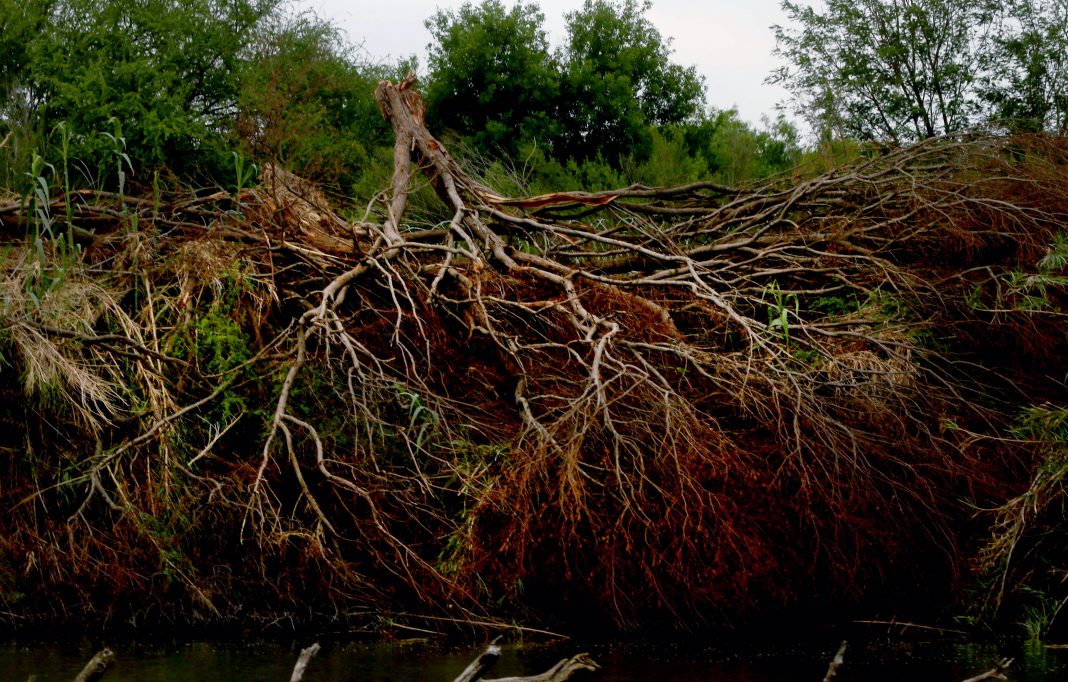MISSION — A lengthy row of concertina wire stretching along the banks of the Rio Grande near Mission is raising questions from local environmentalists concerned that its installation may be harming local wildlife.
The concertina wire has been installed along a piece of private property located within — but not a part of — the Bentsen-Rio Grande Valley State Park in Mission. A row of the razor-lined wire can be seen for several hundred yards along the riverbank where brush and foliage have been cleared away to accommodate it.
“My first thought in seeing this was, this is like pulling the rug out from under the reproductive cycle of the birds and the insects that are fundamental to helping ecosystems,” Marianna Treviño Wright said while looking at the wire from aboard a riverboat on April 14.
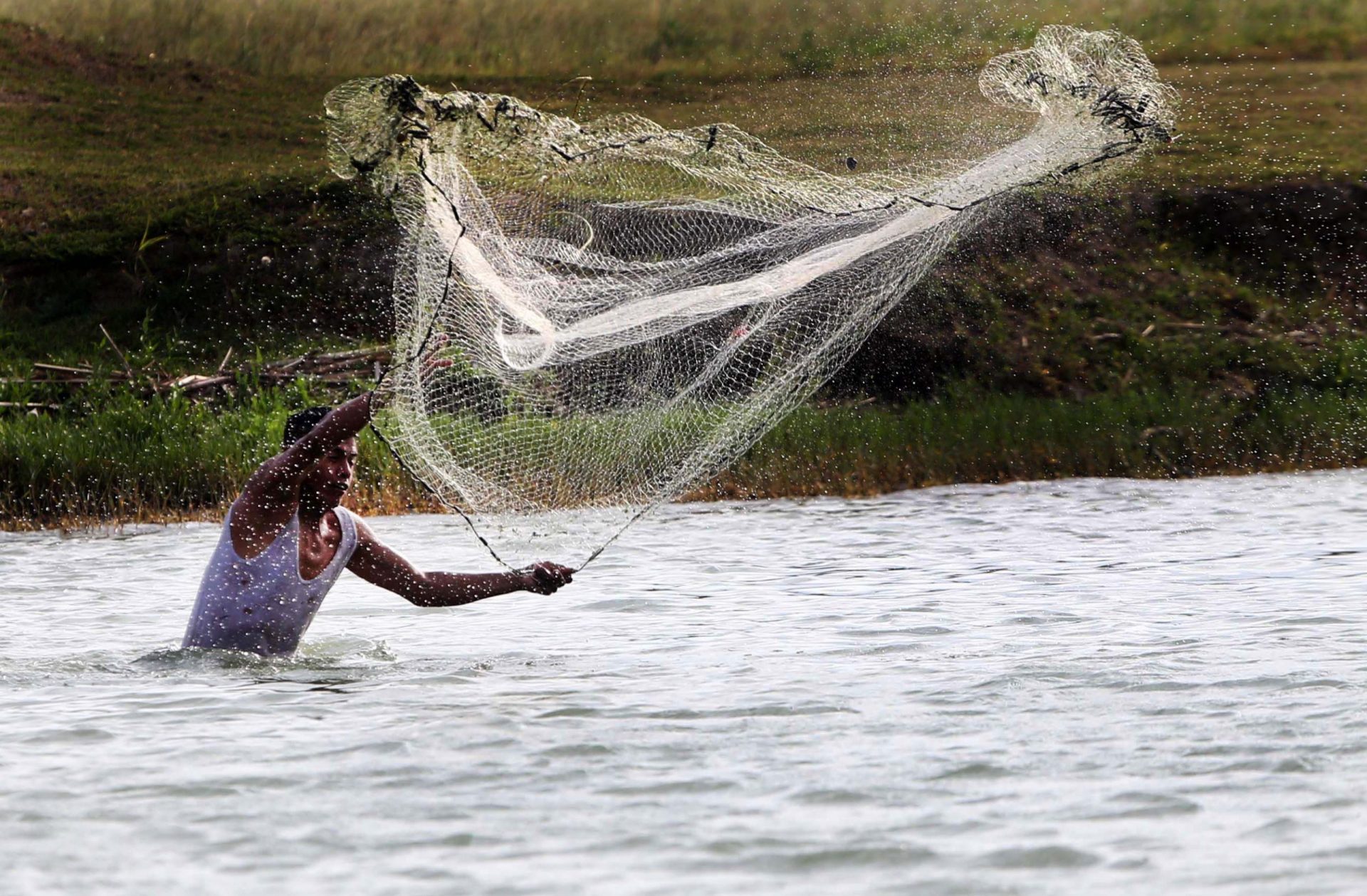
As executive director of the National Butterfly Center, whose 100-acre nature preserve lies not far from the site, Treviño Wright is deeply connected to the seasonal rhythms that bring migratory species to the Rio Grande Valley.
For her, discovering the concertina wire late last week while on a routine boat cruise of the Rio Grande sent alarm bells ringing in her mind about how the installation could be affecting not just the transitory presence of migratory birds and insects, but also native species.
“Texas Parks and Wildlife determined back in 1970 that less than 5% of our native habitat remains. That’s when they began creating the Lower Rio Grande Valley Conservation Corridor,” Treviño Wright said.
“This is a critical part of that. In the Central U.S. Flyway, in the ‘birdiest’ place in the United States. And we have an international migratory bird treaty. We have birds that are migrating now that are here coming to nest. It’s mating season, it’s spring. And then the native habitat also is what helps produce all of the insects that migratory songbirds feed their young,” she said.
County records show the land belongs to the Brand Christian Youth Camp Inc., a nonprofit organization whose board is chaired by McAllen businessman and philanthropist Othal Brand Jr.
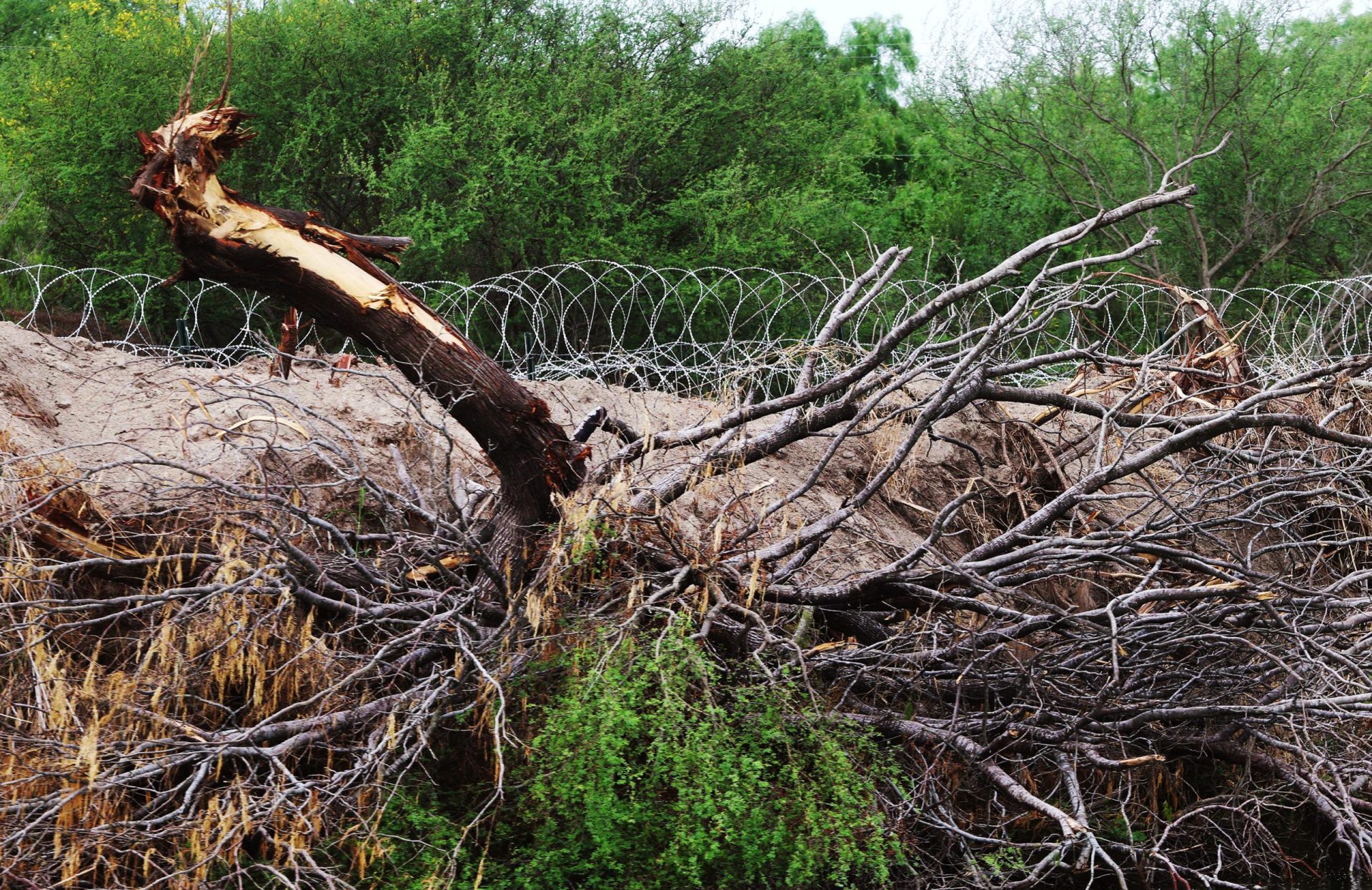
Messages left with Brand seeking comment for this story went unreturned. Another person who confirmed they have authorized access to the campground declined to comment when reached by The Monitor.
But Treviño Wright, who has for the last several years been involved in civil litigation against people who have tried to construct infrastructure along the riverbank, said her courtroom experiences have led her to wonder if similar concerns may exist due to the installation of the concertina wire.
In 2019, Treviño Wright, along with the North American Butterfly Association — the nonprofit which owns the National Butterfly Center — sued the builders of a 3-mile stretch of private border wall along the riverbank.
Not long after, the federal government filed suit against the same defendants, alleging that the group had not obtained proper approval from the International Boundary and Water Commission prior to beginning construction of the wall.
The government further alleged that the wall would put the United States in violation of a 1970 international boundary treaty with Mexico.
The two lawsuits remain ongoing — one in federal court, and the butterfly center’s in state court.
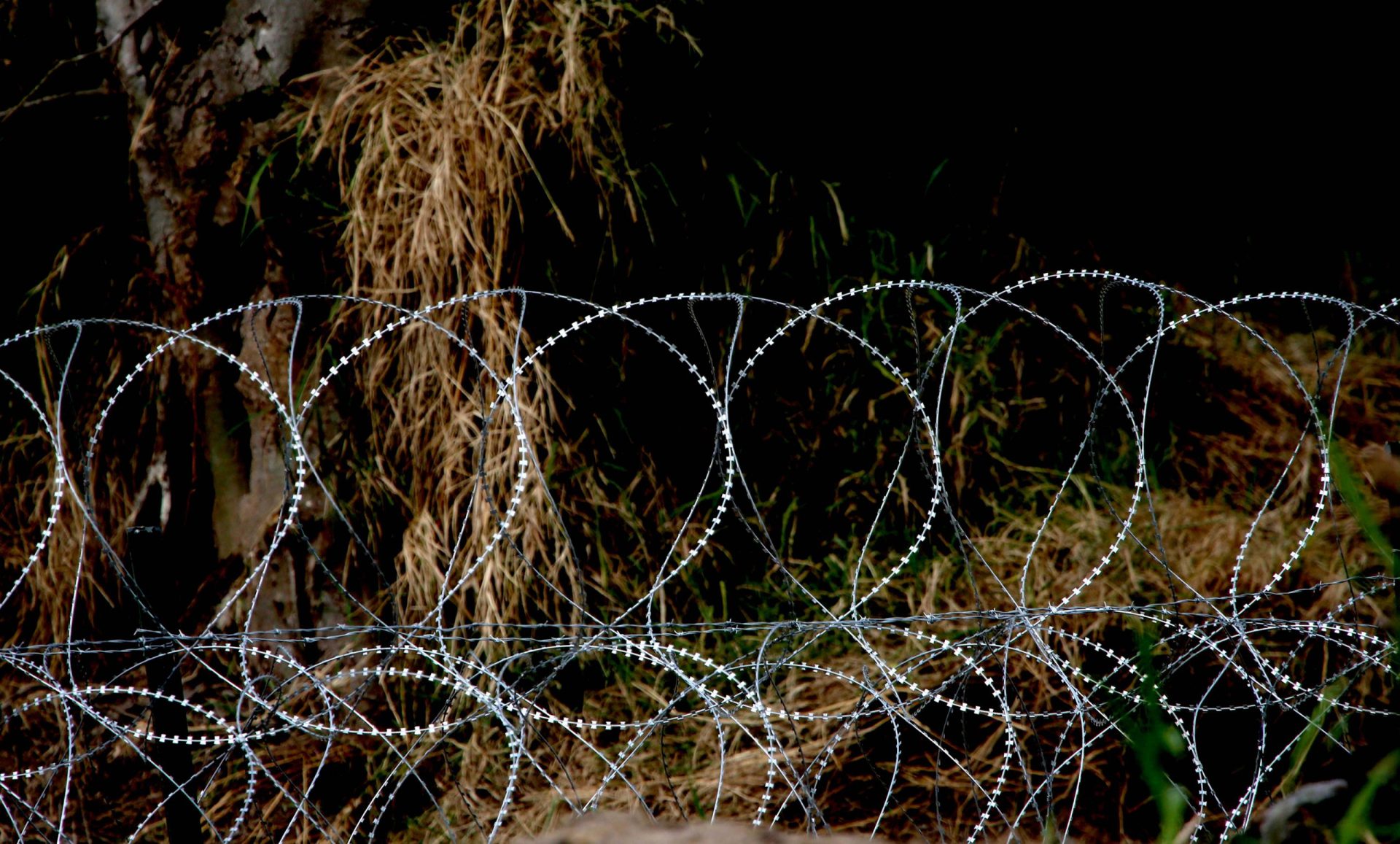
“What I do know from our trial against We Build the Wall and Tommy Fisher and Lance Neuhaus is that the federal government maintains control of the first 300 feet of this riverbank,” Treviño Wright said.
“This clearing of all that vegetation, and the concertina wire, are clearly within that first 300 feet of the riverbank,” she said.
Because of that 1970 treaty, the IBWC — along with CILA, its Mexican counterpart — have enforcement authority over any development that falls within the floodplain of the Rio Grande.
“The 1970 Boundary Treaty prohibits construction that would obstruct or deflect the normal or flood flows of the Rio Grande, meaning that whatever is constructed cannot obstruct the flow, which could cause flooding, or deflect the flow, which could cause a shift in the river channel, affecting the international boundary,” IBWC spokesperson Lori Kuczmanski said when reached for comment.
But as to whether the agency’s purview includes the installation of concertina wire, that remains unknown for now.
“The USBIWC (sic) does not own all the floodplain in this vicinity. The USIBWC is looking into this specific location to determine whether it is a property owner at this specific site,” Kuczmanski said.
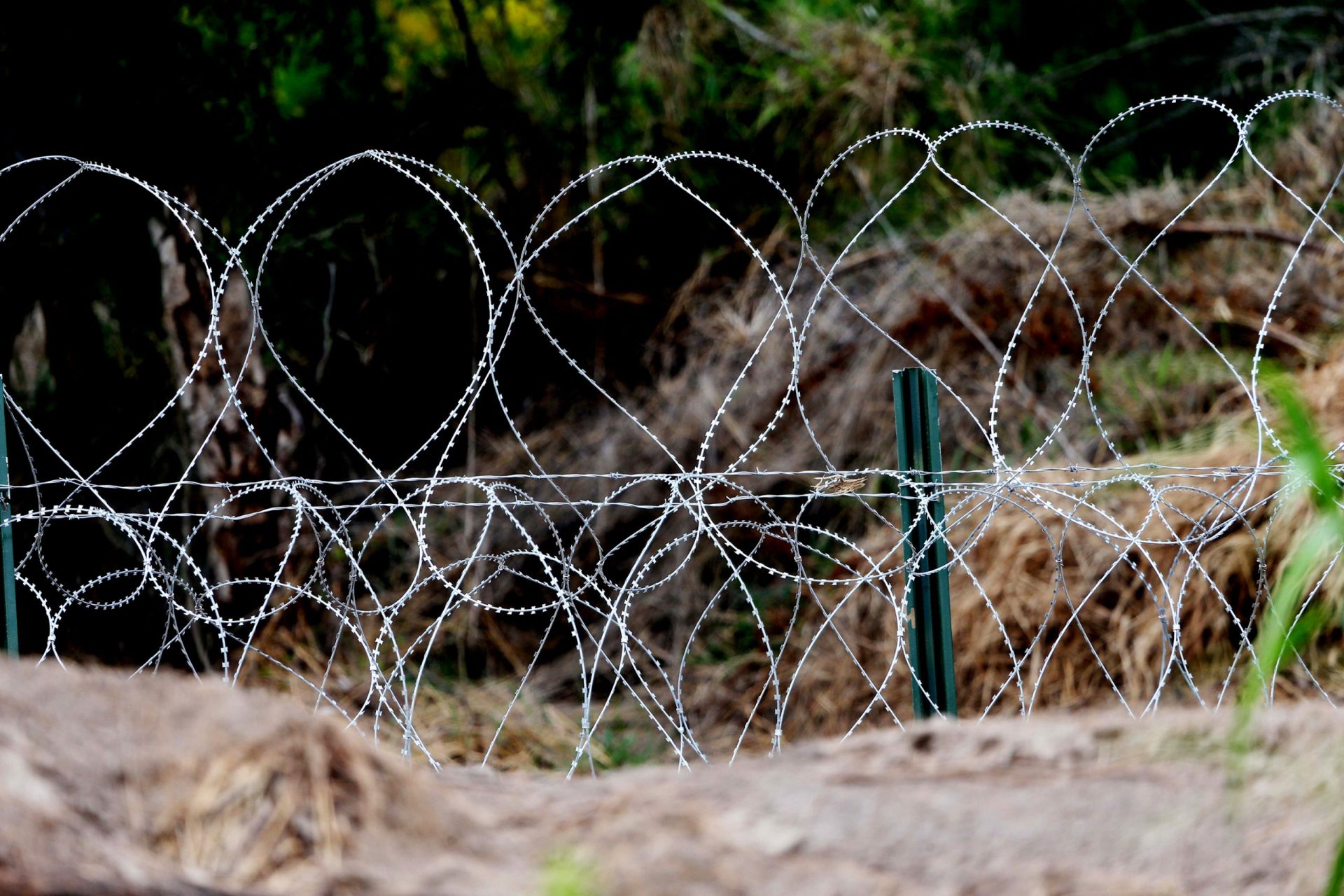
Kuczmanski confirmed, however, that the agency does typically request data on potential impacts from developers seeking to conduct projects within the floodplain.
“The USIBWC requests technical information from project proponents. If there is an obstruction or deflection, we work with the proponents to mitigate the impacts to bring the project into compliance with the treaty,” she said.
Treviño Wright also wondered if the defoliation of the riverbank in order to install the concertina wire may have implications under federal environmental law.
The Monitor reached out to the Environmental Protection Agency to ask whether any federal statutes — such as the Migratory Bird Treaty Act, which protects migratory birds and their nests, or the Clean Water Act, which outlines a permitting process for development that may affect waterways — may be applicable to the installation. The paper has yet to hear back.

